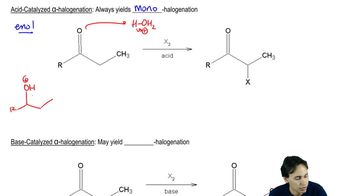What are products of the following reactions?
d.
 Verified step by step guidance
Verified step by step guidance Verified video answer for a similar problem:
Verified video answer for a similar problem:



 2:43m
2:43mMaster Anti-Markovnikov addition of alcohols to terminal alkynes yields aldehydes with a bite sized video explanation from Johnny
Start learning